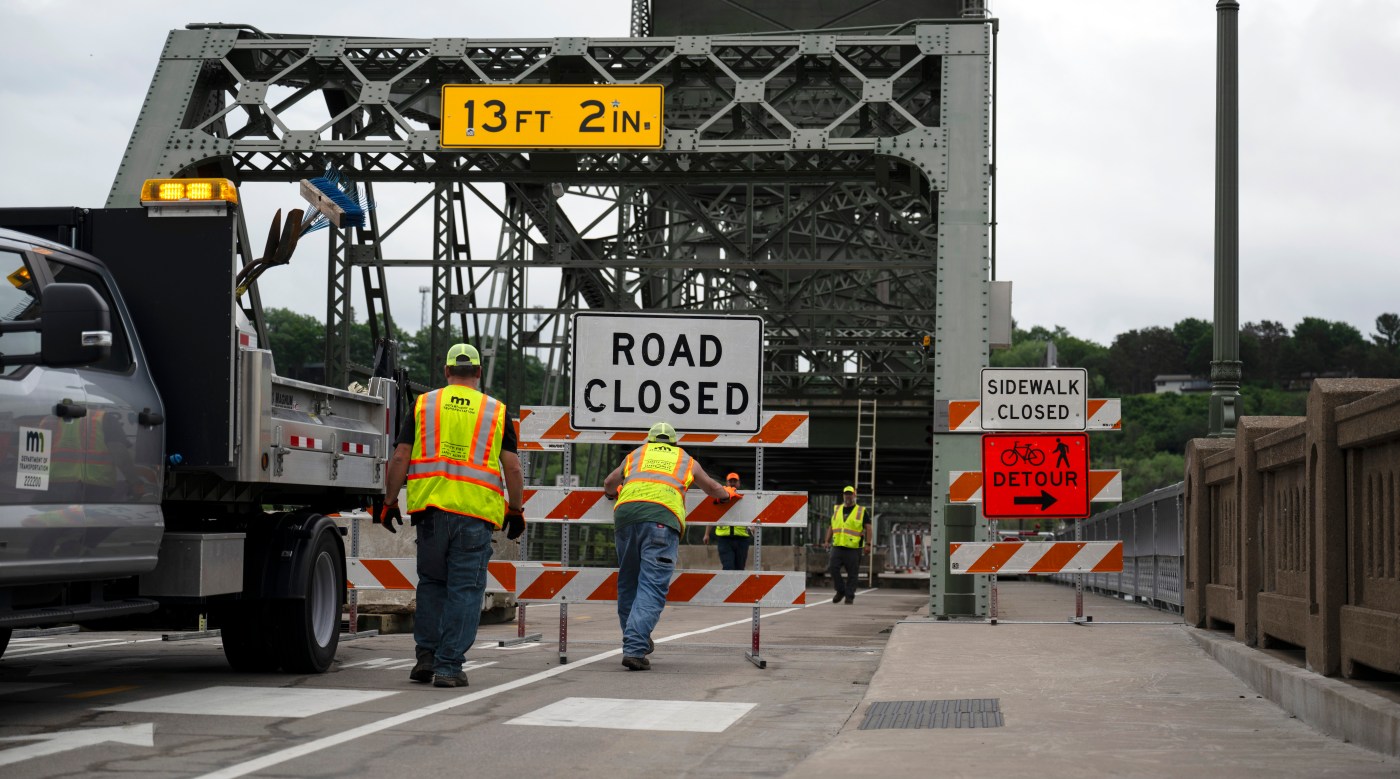
Minnesota officials address emergency response to ‘unprecedented’ flooding
Gov. Tim Walz said the state has seen “unprecedented” flooding in recent weeks as parts of Minnesota have seen upwards of 18 inches of rain in recent days with more precipitation on the way.
“This event is still ongoing,” Walz said, emphasizing people to not enter the likely contaminated water and to obey traffic barriers.
Walz said thus far there haven’t been any serious or deaths as a result of this “very widespread event.”
Over the last few weeks, about 40 Minnesota counties — or nearly half the state — have been impacted by flooding. Seven counties have applied for emergency assistance, Walz said.
In areas that don’t receive federal disaster declaration funding, Walz said the state currently has $26.64 million for emergency relief. When a county applies, Walz said they assess the issue and provide funding to the county in need. This funding will replenish to $50 million in September.
“You never know what you’re going to get with Minnesota weather,” Lt. Gov. Peggy Flanagan said during the Monday conference, adding that last year the state was dealing with drought and wildfires.
Flooding has been particularly severe in southern Minnesota since the end of last week.
On Saturday, Walz declared a peacetime emergency, authorizing the Minnesota National Guard to be available to provide support for emergency flood operations.
“Across the state, intense rain has had catastrophic effects. Flooding has left entire communities under feet of water, causing severe damage to property and numerous road closures. As flooding continues, the National Guard is ready to step up to help our neighbors,” Walz said in the declaration announcement.“Their response will provide invaluable support that will be critical in ensuring the safety of Minnesotans during this difficult time.”
In Le Sueur County, the city of Waterville and the surrounding area received around 14-18 inches of water, causing evacuations and “significant damage,” the announcement said.
Minnesota National Guard Maj. General Shawn Manke said as of Monday the National Guard will have 46 soldiers supporting Waterville and “provide critical support manning pump stations to alleviate the flooded waters in the region.”
“We are ready to work hand in hand with local incident commanders in the state of Minnesota to try and improve the situation,” he said, adding the Guard will continue to monitor the situation.
On Friday, Walz traveled to northeast Minnesota to survey damage caused by severe flooding in Cook and Biwabik.
The governor’s office said floodwaters measured in “several feet, impacting residences and businesses” in downtown Cook. Dozens of roads were closed throughout the county. The Duluth News Tribune reported on Sunday that water had receded in Cook by Sunday afternoon.
According to the DNT, St. Louis County officials recorded more than 1,000 damage incidents since June 18.
“This is the second-largest natural disaster that St. Louis County has seen in three decades,” the governor’s office said in the news release.
Daniel Hawblitzel, the meteorologist in charge for the National Weather Service Twin Cities/Chanhassen, said during Monday’s press conference that the state has seen record flood levels that may get worse.
Many rivers are expected to crest later this week — and that’s without more rainfall, Hawblitzel said. According to Hawblitzel, there are storms predicted to hit some areas across the state on Monday.
“The ground is saturated,” Hawblitzel said. “(The rain) has nowhere to go. So whatever falls, as little as it may be, will only make things worse.”
As a result of the heat dome over the East Coast, Hawblitzel said there are signs this weather pattern may continue over the next few weeks.
In the event of a flash flood, Kristi Rollwagen, director of Homeland Security Emergency Management, encourages Minnesotans to abide by traffic barriers.
“We want you to turn around,” she said. “We don’t want you to drown, and we don’t want you to become part of an unfortunate event.”
As water levels rise over the next few days, Walz said resources will continue to be deployed. Sandbagging will be used as a preventative measure for certain southern regions.
“As we see these chaotic climate events due to climate change increase, we need to think about how we’re building back more resiliently,” Walz said.
Related Articles
Minnesota falls to 19th in education in state ranking
Midwest flooding collapses Iowa rail bridge, forces evacuations and kills at least 1
Minnesota National Guard mobilized to assist with flooding in south-central region
Literary picks for week of June 23: Native American words and music are on display this week
Did you know the bald eagle is not the country’s official bird? A Minnesota effort aims to change that


